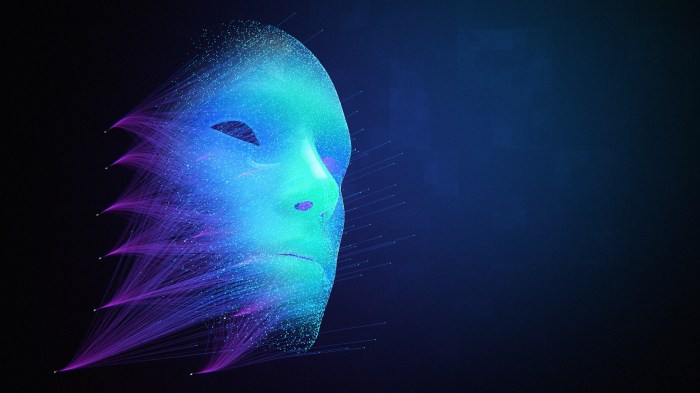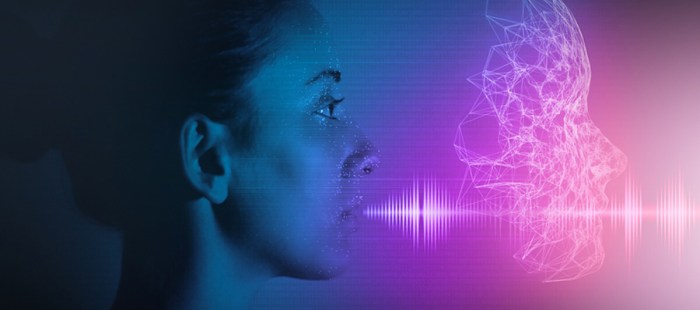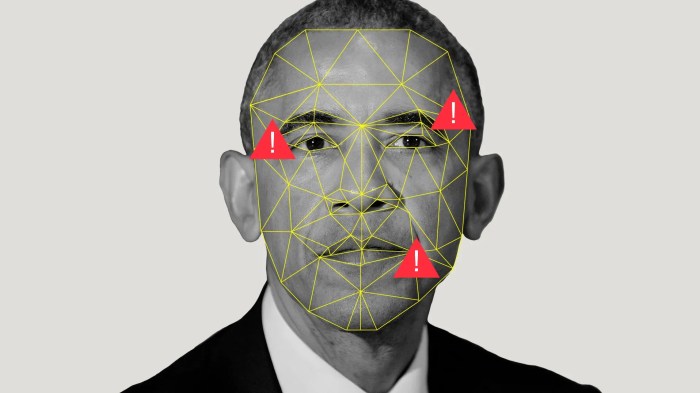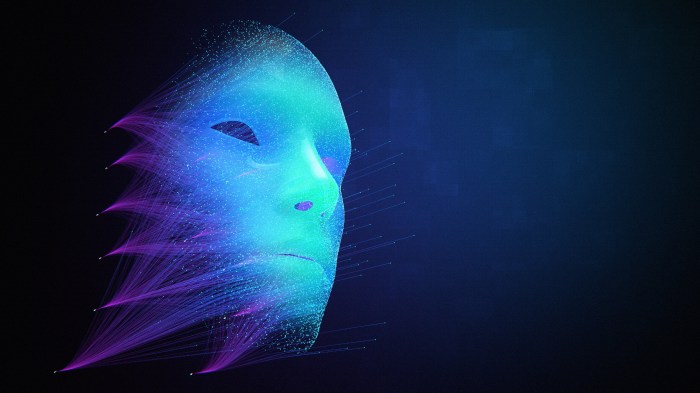
Deepfake media and detection methods are at the forefront of a fascinating and increasingly complex landscape. As technology advances, the ability to create incredibly realistic, yet entirely fabricated, media content has become a reality. From manipulated videos to synthesized voices, deepfakes have the potential to disrupt our understanding of truth and authenticity, raising significant ethical and legal concerns.
This exploration delves into the technical intricacies of deepfake creation, examines the diverse types of deepfakes, and dissects the evolving methods used to detect them. We’ll also delve into the ethical implications and legal challenges associated with this powerful technology, ultimately aiming to provide a comprehensive understanding of this rapidly evolving field.
Types of Deepfake Media

Deepfakes are synthetic media that use artificial intelligence (AI) to create realistic-looking and sounding content. They can be used for various purposes, including entertainment, education, and even malicious intent. Deepfakes can be categorized into different types based on the media they manipulate.
Deepfakes are rapidly evolving, and the techniques used to create them are becoming increasingly sophisticated. This makes it challenging to identify deepfakes, especially for the average user.
Video Deepfakes
Video deepfakes are the most common type of deepfake media. They involve manipulating existing video footage to replace a person’s face or body with that of another person. The techniques used to create video deepfakes include:
- Deep learning algorithms:These algorithms are trained on massive datasets of images and videos to learn the patterns and features of human faces and bodies. They can then be used to generate realistic-looking synthetic content.
- Generative Adversarial Networks (GANs):GANs are a type of deep learning model that consists of two neural networks: a generator and a discriminator. The generator creates synthetic content, while the discriminator tries to distinguish between real and fake content. The two networks compete with each other, improving their performance over time.
Deepfake media is a growing concern, and detecting these manipulated videos and images is crucial. While AI powers the creation of deepfakes, it can also be used to combat them. Companies like Zoom, recognizing the importance of security, are introducing new advanced enterprise offerings, like enhanced security features and compliance tools , to protect sensitive information.
These advancements are essential in the fight against deepfakes, helping to ensure the authenticity of digital communication in our increasingly interconnected world.
- Facial landmark detection:This technique involves identifying key points on a person’s face, such as the eyes, nose, and mouth. These landmarks are then used to map the face onto a different person’s face, creating a seamless blend.
Identifying video deepfakes can be challenging, especially with the advancements in deepfake technology. Some common techniques used to detect video deepfakes include:
- Analyzing facial expressions:Deepfakes often struggle to accurately replicate subtle facial expressions, such as blinking, lip movements, and head movements. This can be a telltale sign of a deepfake.
- Checking for inconsistencies:Deepfakes can sometimes have inconsistencies, such as mismatched lighting, shadows, or background elements. These inconsistencies can be a sign that the video has been manipulated.
- Using specialized software:Several software programs are available that can detect deepfakes by analyzing various video characteristics, such as frame rates, compression artifacts, and color patterns.
Audio Deepfakes, Deepfake media and detection methods
Audio deepfakes involve manipulating audio recordings to make someone sound like they are saying something they did not actually say. The techniques used to create audio deepfakes include:
- Text-to-speech (TTS) synthesis:TTS systems can generate speech from text, creating realistic-sounding audio deepfakes. These systems are trained on massive datasets of human speech and can learn to mimic different voices and accents.
- Voice cloning:Voice cloning techniques involve training a deep learning model on a person’s voice recordings. This model can then be used to generate synthetic speech that sounds identical to the original speaker.
- Audio editing software:Advanced audio editing software can be used to manipulate audio recordings, including splicing, pitch shifting, and adding noise to create realistic-sounding deepfakes.
Identifying audio deepfakes can be challenging, as the human ear can be easily fooled by sophisticated audio manipulation techniques. Some common techniques used to detect audio deepfakes include:
- Analyzing speech patterns:Audio deepfakes can sometimes exhibit unnatural speech patterns, such as inconsistent pitch, rhythm, and intonation. This can be a sign of manipulation.
- Checking for inconsistencies:Audio deepfakes can sometimes have inconsistencies, such as sudden changes in background noise or the speaker’s voice quality. These inconsistencies can be a sign of manipulation.
- Using specialized software:Several software programs are available that can detect audio deepfakes by analyzing various audio characteristics, such as frequency spectrum, pitch variations, and speech rate.
Text Deepfakes
Text deepfakes involve manipulating written content to make it appear as if it was written by someone else. The techniques used to create text deepfakes include:
- Language models:Large language models, such as GPT-3, can generate human-quality text based on prompts and context. These models can be used to create text deepfakes that mimic the writing style of a specific person.
- Sentiment analysis:Sentiment analysis algorithms can be used to identify the emotional tone of text and adjust it to match the writing style of a specific person. This can be used to create text deepfakes that appear to be written by someone with a specific emotional state.
Deepfake media and detection methods are becoming increasingly important in today’s digital world. As technology advances, it’s crucial to stay informed about these developments, and learning new skills like braiding can be a fun way to unwind and de-stress.
Check out this tutorial on the tricks treats cascade braid with sarah lockhart , and then come back to delve deeper into the fascinating world of deepfakes and their implications.
- Style transfer:Style transfer techniques can be used to transfer the writing style of one person to another. This can be used to create text deepfakes that appear to be written by someone with a specific writing style.
Identifying text deepfakes can be challenging, as it can be difficult to distinguish between human-written and AI-generated text. Some common techniques used to detect text deepfakes include:
- Analyzing writing style:Text deepfakes can sometimes exhibit inconsistencies in writing style, such as unusual word choices, sentence structure, or punctuation. This can be a sign of manipulation.
- Checking for inconsistencies:Text deepfakes can sometimes have inconsistencies, such as mismatched information or sudden changes in tone. These inconsistencies can be a sign of manipulation.
- Using specialized software:Several software programs are available that can detect text deepfakes by analyzing various text characteristics, such as word frequency, sentence length, and emotional tone.
Detection Methods for Deepfake Media: Deepfake Media And Detection Methods

Deepfakes are a growing concern as they can be used to spread misinformation and harm individuals. While deepfake technology is rapidly advancing, so are methods for detecting them. Researchers and developers are constantly working on new techniques to identify manipulated media.
Deepfake media is becoming increasingly sophisticated, making it harder to discern reality from fabrication. While the technology is advancing rapidly, so are detection methods, utilizing algorithms to identify inconsistencies and subtle cues. For a fun and engaging way to test your own observation skills, check out this easy magnetic photo puzzle tutorial.
This hands-on activity will help you hone your visual perception, a skill that can be invaluable when navigating the ever-evolving world of deepfakes.
Detection Methods for Deepfake Media
A variety of methods are employed to detect deepfakes, each with its own strengths and weaknesses. These methods can be broadly categorized into two approaches:
- Analysis of Visual Cues: This approach focuses on identifying inconsistencies and artifacts in the generated video or image. These inconsistencies can be subtle and may require specialized algorithms and techniques to detect.
- Analysis of Behavioral Cues: This approach analyzes the behavior of the subject in the media, looking for anomalies that might indicate manipulation. This method often involves using machine learning algorithms to identify patterns in facial expressions, body language, and other behavioral traits.
Here is a table summarizing some of the common detection methods, their principles, strengths, and weaknesses:
| Method Name | Description | Strengths | Weaknesses |
|---|---|---|---|
| Facial Landmark Detection | Analyzes the positions and movements of facial landmarks (e.g., eyes, nose, mouth) to identify inconsistencies in the deepfake. | Can detect subtle changes in facial features. | Can be fooled by high-quality deepfakes that accurately mimic facial movements. |
| Frequency Domain Analysis | Examines the frequency spectrum of the video signal for artifacts introduced by the deepfake generation process. | Effective at detecting certain types of deepfakes that introduce specific artifacts. | May not be effective against deepfakes that minimize artifacts or use different generation techniques. |
| Eye Blink Analysis | Examines the frequency and duration of eye blinks, as deepfakes often struggle to accurately simulate natural blinking patterns. | Can be a reliable indicator for detecting deepfakes. | Can be influenced by factors like lighting and camera angle. |
| Lip Synchronization Analysis | Compares the movements of the subject’s lips with the audio track to identify inconsistencies in lip synchronization. | Effective at detecting deepfakes that have poor lip synchronization. | Can be challenging to detect deepfakes with accurate lip synchronization. |
| Deep Learning-based Detection | Utilizes machine learning algorithms trained on large datasets of real and fake videos to identify deepfakes. | Can achieve high accuracy in detecting deepfakes. | Requires extensive training data and can be susceptible to adversarial attacks. |
Limitations of Current Detection Methods
Despite significant advancements, current deepfake detection methods face several limitations:
- Evolving Deepfake Technology: As deepfake generation techniques become more sophisticated, detection methods need to adapt to stay ahead.
- Limited Datasets: Training deep learning models for accurate detection requires large datasets of both real and fake media. Obtaining such datasets can be challenging.
- False Positives and False Negatives: Detection methods can sometimes misidentify real videos as deepfakes or fail to detect some deepfakes.
- Ethical Concerns: Deepfake detection can raise ethical concerns, particularly regarding privacy and the potential for misuse.
Ethical and Legal Implications of Deepfake Media
Deepfake media, with its ability to convincingly manipulate reality, presents a complex web of ethical and legal challenges. The technology’s potential for misuse, coupled with the rapid evolution of its capabilities, demands careful consideration of its impact on individuals, society, and the very fabric of truth.
Ethical Concerns Associated with Deepfake Media
The ethical concerns surrounding deepfake media are multifaceted and raise fundamental questions about the nature of truth, trust, and the impact on individuals and society.
- Privacy Violation:Deepfakes can be used to create non-consensual content, violating individuals’ privacy and potentially damaging their reputation. Imagine a scenario where a person’s likeness is used to create a fake video depicting them engaging in illegal or immoral activities. This can have devastating consequences for their personal and professional life.
- Erosion of Trust:Deepfakes can undermine trust in information and media by making it difficult to distinguish between genuine and fabricated content. This can lead to a climate of skepticism and distrust, making it harder to discern the truth. Imagine a scenario where a deepfake video of a politician making a controversial statement goes viral.
This could erode public trust in the political system and lead to increased polarization.
- Manipulation and Propaganda:Deepfakes can be used for political manipulation and propaganda, spreading misinformation and influencing public opinion. Imagine a scenario where a deepfake video of a political candidate making a false promise is circulated during an election campaign. This could sway voters and undermine the integrity of the democratic process.
- Emotional Distress and Psychological Harm:Deepfakes can cause emotional distress and psychological harm to individuals who are targeted. Imagine a scenario where a deepfake video of a person being subjected to violence or humiliation is shared online. This can have a significant impact on their mental well-being and self-esteem.
Legal Implications of Creating and Distributing Deepfakes
The legal landscape surrounding deepfakes is evolving rapidly, with various jurisdictions grappling with how to regulate this emerging technology.
- Defamation and Libel:Deepfakes that portray individuals in a false and damaging light can constitute defamation or libel, depending on the jurisdiction. The legal consequences can include financial penalties, injunctions, and even imprisonment.
- Right to Privacy:Deepfakes can violate an individual’s right to privacy, particularly when created without their consent. Legal recourse may be available under privacy laws, depending on the specific circumstances.
- Intellectual Property Rights:Deepfakes can infringe on intellectual property rights, such as copyright and trademark, if they use someone’s likeness or voice without permission. This can lead to legal action by the rights holder.
- Criminal Charges:In some jurisdictions, creating and distributing deepfakes for malicious purposes, such as fraud or harassment, can be subject to criminal charges. The specific charges may vary depending on the nature of the offense and the jurisdiction.
Examples of Deepfakes Used for Malicious Purposes
Deepfakes have been used for malicious purposes in various contexts, highlighting the potential dangers of this technology.
- Political Manipulation:In 2019, a deepfake video of former U.S. President Barack Obama was circulated online, demonstrating the potential for this technology to be used for political manipulation. The video, which appeared to show Obama making a statement that he did not actually make, raised concerns about the spread of misinformation during elections.
- Financial Fraud:Deepfakes have been used to perpetrate financial fraud, such as impersonating company executives to authorize unauthorized transactions. In 2020, a CEO of a British energy company was tricked into transferring a large sum of money to a fraudulent account after receiving a deepfake video call from a person impersonating the company’s chief executive.
- Harassment and Revenge Porn:Deepfakes have been used to create non-consensual pornographic videos of individuals, leading to harassment and emotional distress. This has had a devastating impact on the victims, who may face social stigma and reputational damage.
Future Directions in Deepfake Detection

The field of deepfake detection is rapidly evolving, driven by the increasing sophistication of deepfake creation techniques and the growing need for robust safeguards against their misuse. As deepfakes become more realistic and harder to distinguish from genuine content, research and development in detection methods are crucial to stay ahead of the curve.
Advancements in Deepfake Detection Technologies
New technologies and approaches are continually emerging to enhance deepfake detection capabilities. These advancements aim to address the limitations of existing methods and improve the accuracy and efficiency of detection.
- Multimodal Analysis:Combining data from multiple sources, such as audio, video, and text, can provide a more comprehensive view of the content and increase the likelihood of detecting inconsistencies. For example, analyzing lip movements in a video alongside the corresponding audio can help identify discrepancies that might indicate a deepfake.
- Artificial Intelligence (AI) and Machine Learning (ML):AI and ML algorithms are increasingly being employed for deepfake detection. These algorithms can learn from vast datasets of real and fake media to identify subtle patterns and anomalies that might be missed by human observers.
- Biometric Analysis:Analyzing unique biological features, such as facial expressions, micro-movements, and even heartbeats, can help differentiate real individuals from deepfake representations. These techniques are becoming increasingly sophisticated and can offer valuable insights into the authenticity of media content.
- Blockchain Technology:Blockchain can be used to track the provenance of media content, ensuring its authenticity and origin. This technology can create a tamper-proof record of the content’s history, making it more difficult to manipulate or forge.
Research and Development in Deepfake Detection
Ongoing research is exploring various aspects of deepfake detection, aiming to improve existing methods and develop new approaches.
- Deepfake Detection Datasets:Creating comprehensive and diverse datasets of deepfakes is essential for training and evaluating detection algorithms. Researchers are working to develop datasets that capture the full range of deepfake techniques and scenarios, enabling the development of more robust and accurate detection methods.
- Explainable AI (XAI):Deepfake detection algorithms are often complex “black boxes,” making it difficult to understand their decision-making processes. XAI aims to make these algorithms more transparent, providing insights into how they identify deepfakes and enabling users to trust their results.
- Real-Time Deepfake Detection:The ability to detect deepfakes in real time is crucial for mitigating their potential harm. Researchers are developing methods for real-time deepfake detection, leveraging technologies like edge computing and AI-powered video analysis.
- Deepfake Creation Detection:Identifying the tools and techniques used to create deepfakes can help in understanding the methods used and developing more effective detection methods. Research in this area focuses on analyzing the artifacts and signatures left behind by deepfake creation software.
The Future of Deepfake Media and Detection
The future of deepfake media and its detection is likely to be characterized by an ongoing arms race between creators and detectors. As deepfakes become more sophisticated, detection methods will need to adapt and evolve to stay ahead.
- Integration of Detection Technologies:Combining multiple detection methods, such as AI, biometric analysis, and blockchain, can create a more robust and comprehensive approach to identifying deepfakes. This integrated approach can leverage the strengths of each method to overcome their individual limitations.
- Proactive Detection:Instead of solely focusing on detecting deepfakes after they are created, proactive detection aims to prevent their creation in the first place. This approach involves identifying and mitigating the risks associated with deepfake creation, such as by controlling access to deepfake creation tools or developing ethical guidelines for their use.
- Public Awareness and Education:Increasing public awareness about deepfakes and their potential impact is crucial for mitigating their negative consequences. Educating individuals about the signs of deepfakes and how to critically evaluate media content can empower them to make informed decisions.






